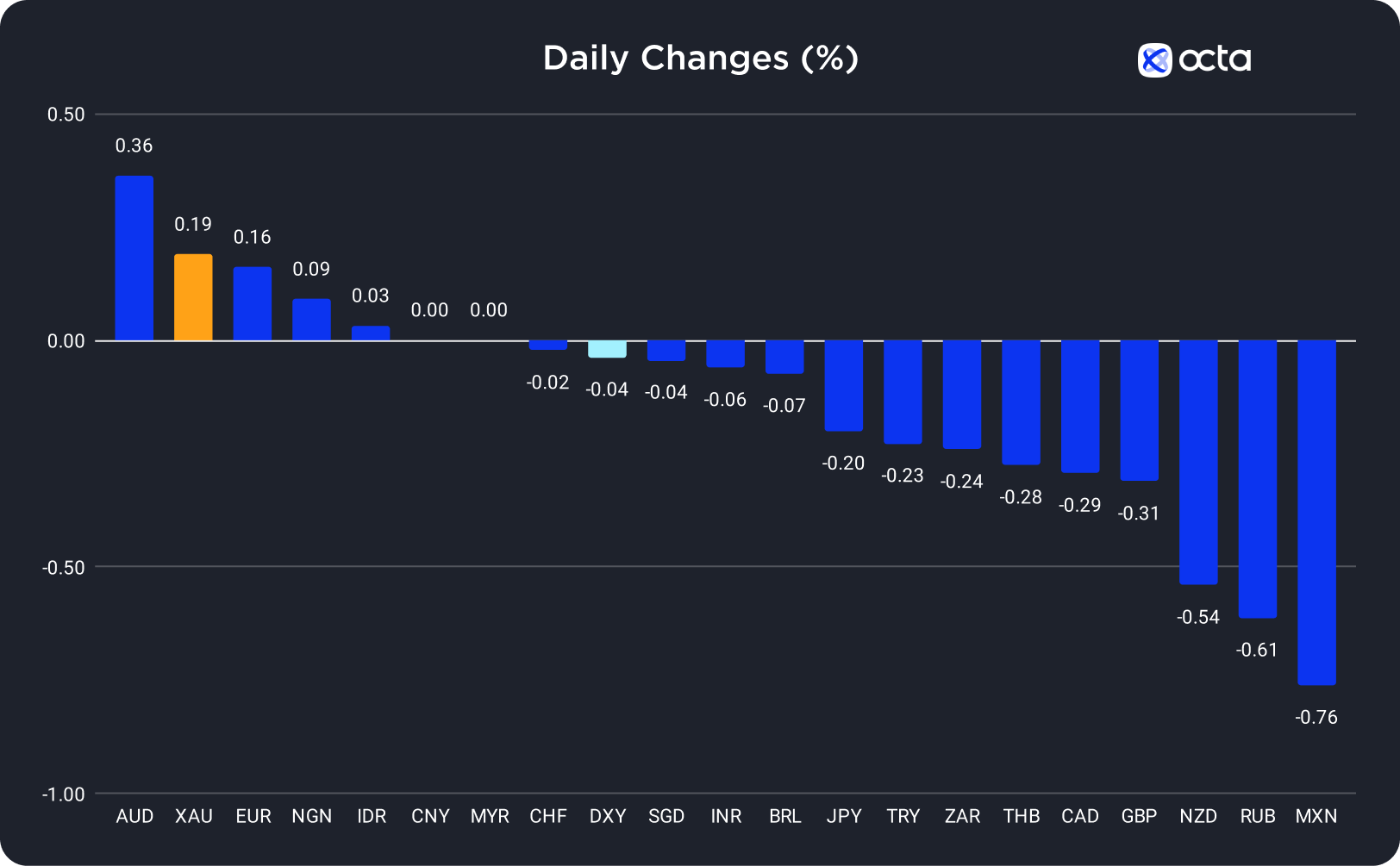On Tuesday, the Australian dollar (AUD) was the best-performing currency among the 20 global currencies we track, while the Mexican peso (MXN) showed the weakest results. The Nigerian naira (NGN) was the leader among emerging markets, while the New Zealand dollar (NZD) underperformed among majors.
Gold Rose to a One-Month High as the Middle East Conflict Continued to Escalate
Gold (XAU) rose slightly on Tuesday as geopolitical risks caused by the Middle East conflict continue fuelling safe-haven flows.
The U.S. Retail Sales report came out higher than expected, and the chances of another rate hike from the Federal Reserve (Fed) increased. The market now is pricing in a 42% chance of another rate increase in December, which is 5% higher than yesterday. Still, the gold price continued to rise as investors remained worried due to the escalation of the Israel-Hamas conflict.
"Until there is some type of ceasefire or de-escalation, gold is going to hover above the 1,900 range," said Everett Millman, the chief market analyst at Gainesville Coins.
XAU/USD also grew after the data indicated that the economy of China, a leading gold consumer, experienced faster-than-anticipated growth in Q3 compared to the previous year.
XAU/USD continued to rise during the Asian and early Europen trading sessions, reaching a one-month high as tensions in the Middle East showed no signs of easing. A devastating explosion in Gaza hospital increased concerns that the conflict will continue to intensify, making gold—a safe-haven asset protecting from geopolitical uncertainties—more appealing to investors. Today, traders should pay attention to the upcoming speeches of the Fed officials. FOMC members Christopher Waller, John Williams, and Michelle Bowman will give speeches at 4:00 p.m., 4:30 p.m., and 5:00 p.m. UTC.
"Spot gold is expected to break a resistance of 1,942 USD per ounce and rise into 1,964–1,972 range," said Reuters analyst Wang Tao.
GBP/USD Fails to Rise Despite Higher-Than-Expected CPI Numbers
The British pound (GBP) lost 0.31% on Tuesday as data revealed a slowdown in the regular pay growth of British workers and a decrease in job vacancies.
The state of the jobs market is one of the key factors the Bank of England (BOE) considers when setting the U.K. interest rate. Indeed, the latest employment figures prompted some analysts to expect the first rate cut from the BOE in the next year's Q3 and believe that the rate-hiking cycle is over.
GBP/USD recovered in the early European session after the Consumer Price Index (CPI) report came out stronger than expected, indicating a steady rise in headline and core inflation. Consumer prices are another key factor in the BOE's decision-making process, and now the regulator faces a challenging task. Inflation remains sticky, prompting the BOE to continue hiking rates. However, the labor market is weakening, meaning a higher base rate might trigger a recession. Hetal Mehta, the head of economic research at St. James's Place, says that increasing inflation may bother BOE policymakers, but it doesn't mean another rate increase will likely follow. Today, traders closely follow speeches of FOMC members—Christopher Waller, John Williams, and Michelle Bowman—at 4:00 p.m., 4:30 p.m., and 5:00 p.m. UTC.
